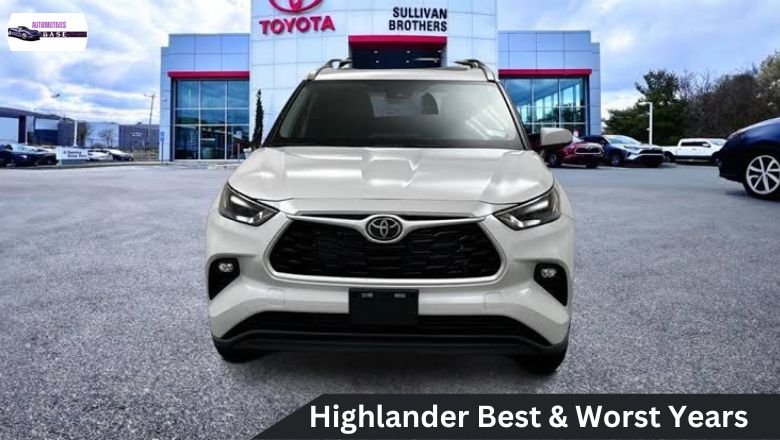The Toyota Highlander has been a popular midsize SUV for more than 20 years, known for its reliability, comfort, and versatility. Some years have been exceptional, while others have been less impressive.
This article looks at the best and worst Toyota Highlander years to help buyers and fans choose the right model. We will discuss power, features, and safety to show how the SUV has changed over time. Let’s find out which years are the top choices and which ones fall short in the SUV’s history.
Toyota Highlander Generations
The various iterations of the Toyota Highlander provide a comprehensive look at how the model has evolved over time.
Each generation signifies important shifts in design, features, and technology that can have a significant impact on a consumer’s purchasing choice.
| Generations | Year |
|---|---|
| Toyota Highlander (XU20, 1st generation) | 2001-2007 |
| Toyota Highlander (XU40, 2nd generation) | 2008-2013 |
| Toyota Highlander (XU50, 3rd generation) | 2014-2019 |
| Toyota Highlander (XU70, 4th generation) | 2020-Present |
Neutral years, on the other hand, are those in which the model remains consistent with its established standards, offering neither groundbreaking innovations nor notable drawbacks.
Toyota Highlander: Best, Neutral, and Worst Years
After researching for many hours, we looked at different factors like owner-reported reliability, maintenance costs, safety ratings, Consumer Reports scores, NHTSA recalls, and ratings from sources like Edmunds, JD Power, KBB, VehicleHistory, and Cars.com to categorize the Toyota Highlander models.
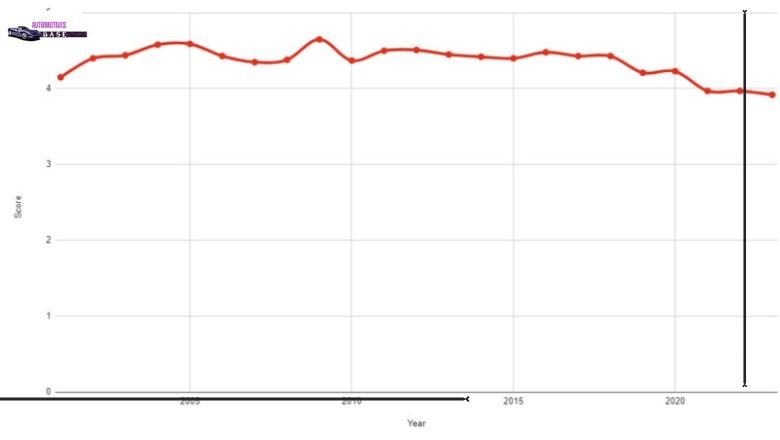
Some factors can lower the rankings, like a high number of NHTSA recalls, which may indicate lower reliability.
| Generation | Best Years | Neutral Years | Worst Years |
|---|---|---|---|
| 1st (2001-2007) | 2003 2004 2005 2006 | 2002 | 2001 2007 |
| 2nd (2008-2013) | 2009 2011 2012 | 2013 | 2008 2010 |
| 3rd (2014-2019) | 2014 2016 2017 2018 | 2015 | 2019 |
| 4th (2020-Present) | 2020 | 2021 | 2022 2023 |
This information will help you know which years to avoid and which ones to consider. Next, we will discuss the best and worst years for each generation.
Best And Worst Years For Toyota Highlander 1st Generation (2001–2007)
Toyota introduced the first Highlander in 2001.

It was a comfortable and reliable midsize SUV.
Best Years: 2003, 2004, 2005, 2006
During this time, the initial batch of vehicles excelled in terms of dependability, smooth driving experience, and ample storage capacity.
A significant upgrade came in 2004 with the introduction of the powerful 3.3-liter V6 engine, which not only increased towing capabilities but also maintained fuel efficiency.
Advancements in safety technology were evident during these years, with the inclusion of advanced airbag systems and the option for stability control.
Neutral Year: 2002
The 2002 version showed satisfactory dependability and power. Nevertheless, small engine-related problems like coolant leaks and oxygen sensor malfunctions prevented it from attaining top ratings.
Its positive attributes, including spacious interiors and a smooth ride, were somewhat offset by these minor issues.
Worst Years: 2001, 2007
In 2001, the first model of this generation encountered various obstacles, such as transmission malfunctions and air conditioning system breakdowns.
These difficulties resulted in a notable increase in complaints from owners, damaging its initial standing. The 2007 variant, marking the conclusion of this era, received widespread disapproval due to its lackluster performance and below-average interior craftsmanship, concluding an otherwise robust generation on a disappointing note.
Toyota Highlander Best And Worst Years For 2nd Generation (2008–2013)
In 2008, the redesigned Highlander was introduced as a more spacious and family-oriented vehicle, catering to the needs of the second generation.
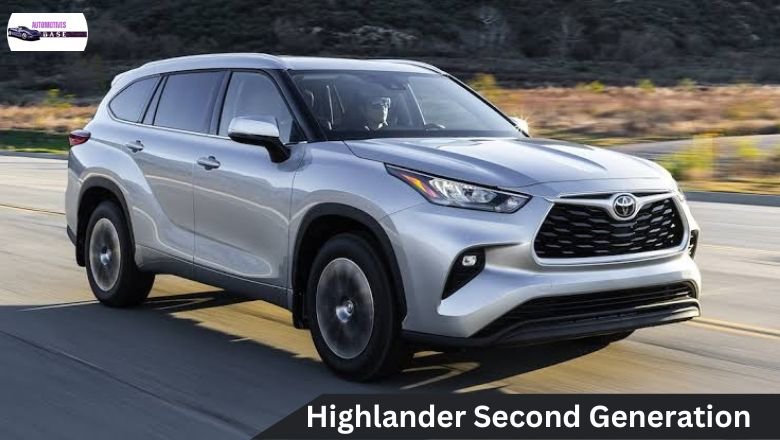
One notable feature that sets the second generation Highlander apart is its spacious cabin, providing ample room for passengers and cargo.
Best Years: 2009, 2011, 2012
The 2009, 2011, and 2012 versions were praised for their dependable performance and generous three-row seating, catering well to big families.
These years saw the implementation of a stronger 3.5-liter V6 engine that delivered a great mix of power and fuel economy. Additionally, the inclusion of advanced safety technologies such as traction control and upgraded crash safety ratings added to their overall attractiveness.
Neutral Year: 2013
Despite being dependable and spacious, the 2013 model didn’t distinguish itself from other years within its generation due to minor problems with the electric power steering and occasional transmission issues, preventing it from receiving a higher rating.
Worst Years: 2008, 2010
The second generation was initiated by the 2008 model, which faced engine problems like high oil consumption. Owners also complained about issues with interior electronics, such as faulty navigation systems and climate control malfunctions.
The 2010 model encountered comparable troubles, including premature brake wear and concerns regarding body durability.
Best And Worst Years Toyota Highlander For 3rd Generation (2014–2019)
In 2014, the third iteration of the Highlander was unveiled, boasting a heightened sense of luxury, enhanced performance, and cutting-edge safety technology.

Toyota Highlander third generation stands out as a reliable and attractive option in the competitive midsize SUV market.
Best Years: 2014, 2016, 2017, 2018
The reliability, performance, and luxurious interior of these models stood out. A more efficient transmission enhanced fuel economy, while the Highlander’s tech features were made easier to use.
Safety was also a highlight, with Toyota’s Safety Sense package including pre-collision warning and lane departure warning for added security.
Neutral Year: 2015
The 2015 Highlander stayed true to the reputation of its predecessor without introducing significant improvements or major problems.It fell short of surpassing them while it upheld the high standards set by the 2014 model.
A few users experienced issues with the infotainment system and noted that the ride quality was slightly rigid, which took away from its overall strong standing.
Worst Year: 2019
Criticism of the 2019 model arose from its lackluster driving dynamics and transmission problems such as sudden gear shifts and delayed responsiveness.
These issues resulted in a diminished rating for the vehicle despite offering a luxurious interior and numerous safety features as standard.
The Best And Worst Toyota Highlander Years For 4th Generation (2020–Present)
In 2020, the latest model of the Highlander, now in its fourth generation, enhanced.Its aesthetics and incorporated cutting-edge technological advancements.
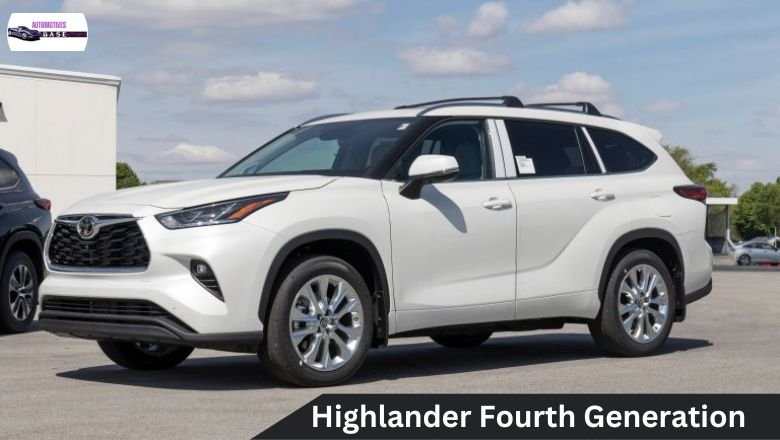
One standout feature of the fourth generation Highlander is its advanced safety technology, including Toyota Safety Sense 2.0 suite which comes standard on all trims.
Best Year: 2020
The 2020 model raised the bar for the next wave, showcasing a wide array of driver assistance technologies, a luxurious and roomy interior, and a powerful V6 engine.
Its makeover brought in a sleeker exterior and a quieter cabin, boosting its overall attractiveness. Yet, it was the debut of the Highlander Hybrid with its remarkable fuel efficiency that truly distinguished the 2020 model.
Neutral Year: 2021
The 2021 Highlander stayed competitive in the midsize SUV market but didn’t have many changes from the 2020 model.
It got good safety ratings and has a comfy interior, but some people didn’t like the complex infotainment system and higher starting price. Overall, it was seen as just okay.
Worst Years: 2022, 2023
The new models got bad reviews. Users had trouble with the infotainment system, like the screen freezing and restarting unexpectedly.
Also, there were reports of small issues with the brakes and transmission, which put them in the lowest tier.
Toyota Highlander Average Resale Values
We conducted a thorough examination of the typical resale prices for every Toyota Highlander model year.
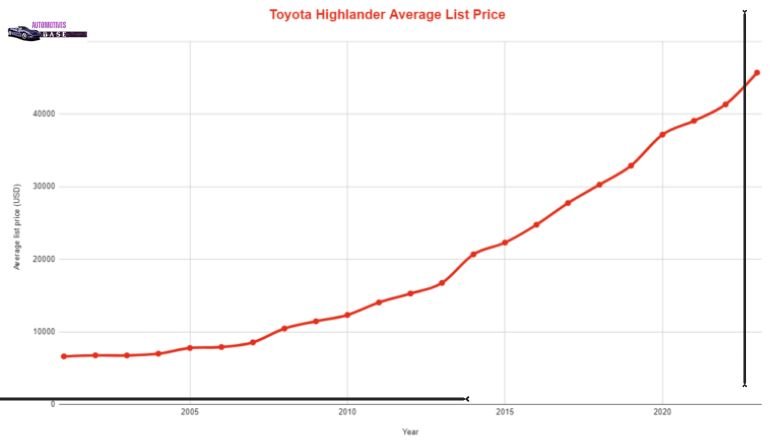
This information provides a clear indication of the amount you can anticipate spending to acquire an average Toyota Highlander in that particular year.
Conclusion
The Toyota Highlander has had good and bad times over the years. Some years are known for being reliable, safe, and performing well, while others have had problems like transmission issues or a not-so-great design.
It’s important for buyers to do research and think about the advantages and disadvantages of each year before buying. Buyers can choose the best option for them by considering things like reliability, safety, and value. Don’t forget to read about the best and worst Toyota Highlander years before buying.
FAQs
Which One Are The Reliable And Best Years Highlander Models?
When it comes to reliable and best years for Highlander models, many Toyota enthusiasts and experts recommend the 2013 and 2014 model years. These years are praised for their strong performance and comfortable rides.
Which Toyota Highlander Best Years To Buy?
The 2017 Toyota Highlander is often regarded as one of the best years to buy due to its strong engine options, spacious interior, and advanced safety technology. The 2020 Toyota Highlander received a full redesign with improved fuel efficiency and updated infotainment features, making it another top choice for buyers.
Which One Are More Reliable Toyota Highlander Or Toyota Corolla?
The Toyota Highlander is a midsize SUV that offers more space, power, and versatility compared to the compact Toyota Corolla. Toyota Corolla is a compact sedan that is known for its fuel efficiency, affordability, and ease of maneuverability. It is a popular choice for daily commuting or city driving due to its compact size and efficient performance. Both vehicles have a reputation for longevity and low maintenance costs, so the choice between them ultimately depends on your specific needs.

